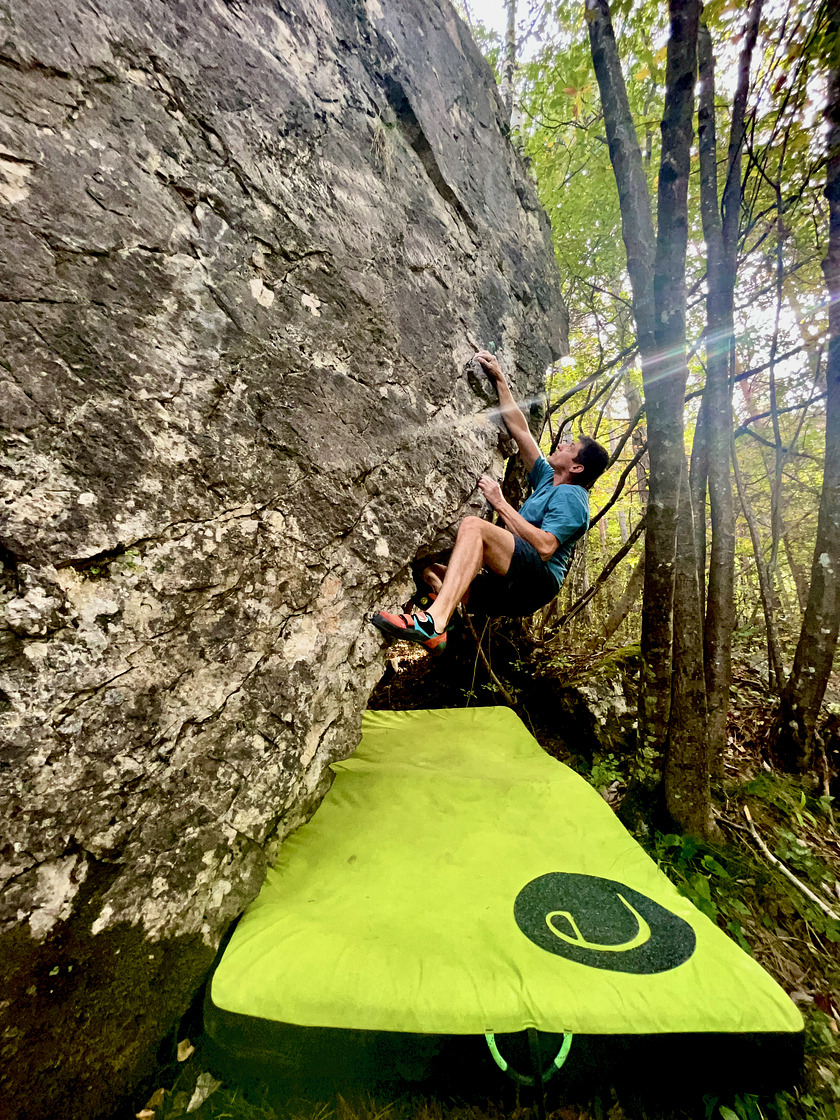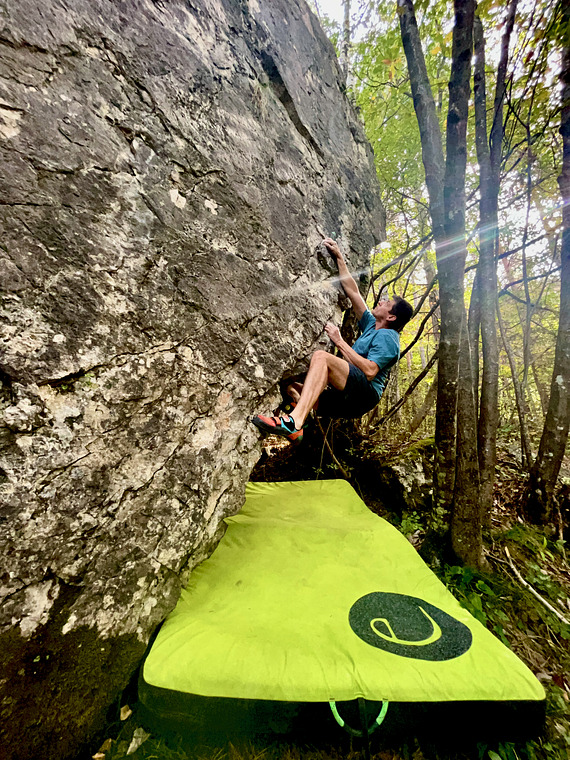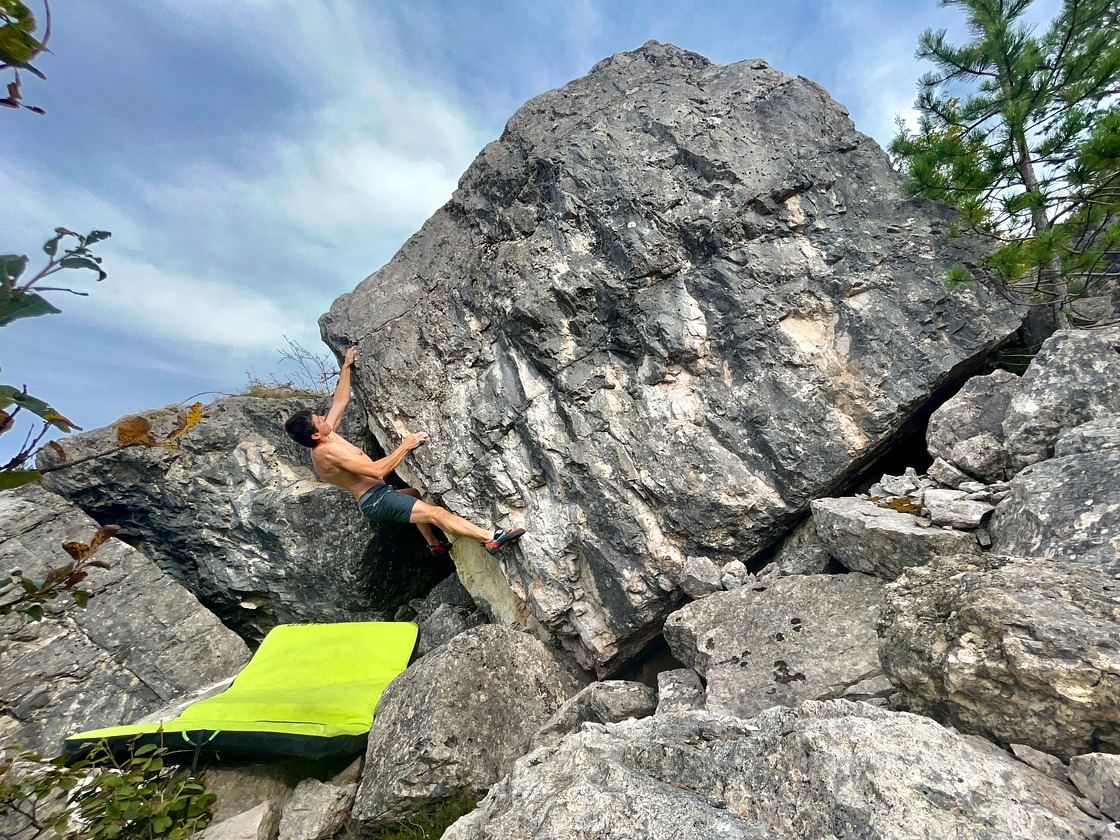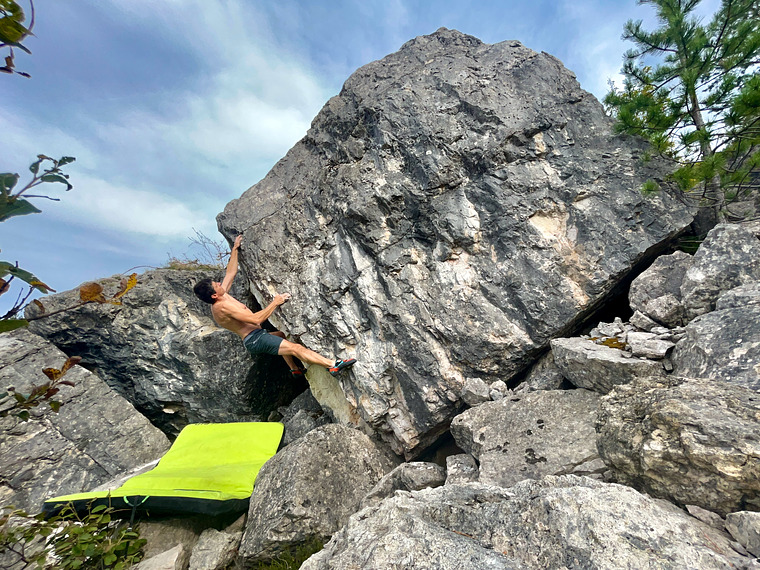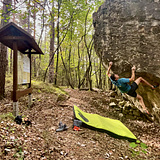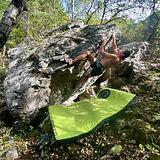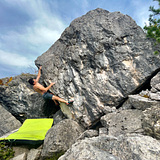🚶♂️ 5-15' - ⛰️ 900-950 MSL - 🧭 N / E / S / W
☀️ Part of the area is shaded by trees, the rest is really sunny / Parte dell’area è ombreggiata dagli alberi, la rimanente è soleggiata
🇬🇧/🇺🇸
Situated near Trento, we have an interesting boulder area nestled on the slopes of Mount Chegul, overlooking the Cimirlo pass. The boulders here originated from a massive landslide, the rock composition is limestone.
With over 70 climbing problems available, the difficulty levels span from easy (3) to challenging 7Bish, leaving ample room for the exploration of new routes.
While climbing is feasible year-round, be mindful of the potentially scorching temperatures during the central hours of summer days. The optimal seasons to get the best friction are Spring and Autumn. What sets this area apart is its dual personality: part of it is shaded by trees, while the other on the landslide is really sunny. You have the freedom to choose between climbing in the warmth or seeking shade, depending on the prevailing temperatures.
Landings in the tree-shaded area are generally secure, whereas those on the landslide can be a bit more spicy.
Notably, this area is in close proximity to the historic Celva crag. For enthusiasts of sport routes, it's an absolute must-visit!
🇮🇹
Nei pressi della città di Trento si trova un’interessante area boulder, situata sulle pendici del Monte Chegul, appena sopra il passo del Cimirlo. I suoi massi di roccia calcarea sono il risultato di una considerevole frana.
Ci sono più di 70 passaggi, con difficoltà da molto ridotte (3) a più impegnative (7B). C’è ampio spazio per nuove vie.
È possibile arrampicare durante tutto l'anno, ma nelle ore centrali estive le temperature potrebbero essere troppo alte. Le stagioni migliori per un grip ottimale sono la primavera e l'autunno.
La caratteristica interessante di questa zona è che una sua parte è immersa nel bosco e ombreggiata dagli alberi, mentre l'altra situata sulla frana è molto soleggiata. Scegliete pure se arrampicare al sole o meno in base alle temperature.
Gli atterraggi sono generalmente confortevoli nella zona boschiva, un po' più scomodi sulla frana.
Questa zona è molto vicina alla falesia storica di Celva. Se siete amanti delle vie tecniche sportive non potete perdervela!
